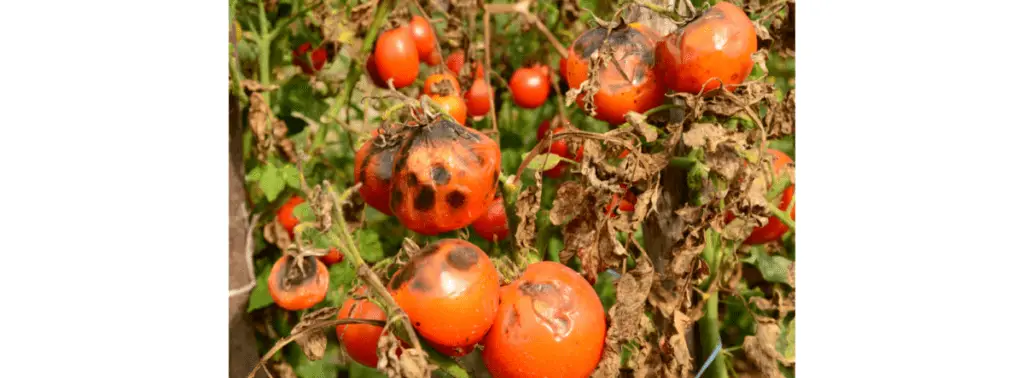
Many people notice that their plants are dying and then ask themselves, “why is my garden dying?” They don’t know why the plants they have invested so much time in is wilting before their eyes. You probably start to wonder this when you walk into your backyard and see all the wilted spots on your green, healthy plants. If you’re like most people, you’re anxious to figure out what’s wrong so that you can save your plants – or at least prevent them from dying over the next couple of months.
There are many different potential culprits, so it’s important to assess each one individually to figure out what exactly is happening. The most frequent culprits are pests, diseases, and watering. It may be you may be over (or under) watering your plants, or the opposite a sign of poor irrigation.
How do you tell if a plant in your vegetable garden is dead or dying?
There are several ways to tell if a plant is dead, so recognize which one your plants are exhibiting.
1. Dead leaves turn yellow and fall off a while before they wither away. Most diseases and pests cause yellowing of leaves, such as bee mites, spider mites on the underside of leaves, spider mites on the surface of the leaf, aphids (plants lice), fungal infections (mold), and caterpillar populations that infest leaf buds.
2. Plants are killed by overwatering, particularly in extremely dry weather conditions, or when plants have not been watered for months. Over watered plants will exhibit wilting of the leaves, yellowing of the leaves and stems, and eventual death of the plant.
3. Some plants, from dying from stress, such as drought and sunlight.
4. This can be caused by poor water supply for the plant (drought) or by over watering that results in root rot or over watering which can result in leaf spots, tip burn, and die back of the upper leaves.
5. A dormant seedling is an example of a plant that is dormant (not alive). A seedling is dormant until it germinates and sprouts from the seed. A seedling that never germinates is dead. A seedling that has just sprouted is alive.
6. Plants which have been killed by frost or frozen are dead, no matter if they are evergreen or not.
7. Animals eat plants and leave the remains behind as a result of their feeding activities. Learn more in our Animals in the Garden post.
Why are my plants leaves turning yellow?
When plants are not able to maintain the production of green chlorophyll (the pigment that gives plants its green color) in the face of nutrient stress, chlorophyll production stops and yellow carotenoids take over. Some plants can still be useful even after losing all their leaves, such as onions and rhubarb. You can learn more about onions here. Corn retains a small amount of green below the leaf, so it is still viable for food. In general, plants are considered dead when they have lost all their leaves.
The culprit is likely a fungus or bacteria. For example, fungal diseases such as powdery mildew, canker, and root rot are often the cause of wilting leaves. Yellowing leaves indicate that plants growth has been stunted and nutrients have been depleted. Rather than the plants being stressed and dying, it is just waiting for the fungal or bacterial infection to finish killing it.
What to do if you over water a plant while gardening?
When you over-water a plant, it can cause the roots to rot. Overwatering is the most common cause of problems with indoor plants. It can cause leaves to wilt, stems to rot, and even root death. It can also make soil cold and wet, which is a situation that bacteria and fungus love. If your plant overwaters First, check whether the plant is potted in soil or in a container. Overwatering containers can lead to root rot, which kills plants. To solve the problem, let the soil dry out completely and then repot with fresh soil (if needed). Find out how often you should be watering your garden in our How Often Do You Have To Tend Your Garden post.
What to do if your plants have mold- don’t let plants die?
Mold can grow on the leaves, stems, and roots of plants. Mold often causes wilting, with the leaves drooping and yellowing. Fungal infections can damage a plant’s ability to absorb water and nutrients from the soil. If fungal infections are present in the root, they can cause wilting and yellowing of the leaves. It may take several days for a plant to wilt once the fungal infection has been established on its roots.
If your plant has mold, you can treat the plant as soon as you notice it. Remove all traces of mold and clean the area to remove spores. You can also take steps to prevent further mold growth.
Some often used methods of controlling mold include correcting the humidity level in the air, increasing air circulation throughout the area, and spraying bleach to kill airborne spores.
How to control a fungus on your plants?
To control fungus on the root, you must first remove the cause of the fungus and prevent it from reoccurring. Remove any standing water in and around your plants or any soil that has been excessively wet.
To remove the fungus, you will have to carefully cut away or kill it with a pesticide that kills the fungus. You can also use a fungicide, which is a product used to prevent and control fungal diseases in plants.
Plants dead in one area of garden?
My plants die it is a fact of your garden. Lets look at some reason why an area of garden plants or tree might die.
- Too much water or because of changing your watering pattern.
- Disease if a patch of plants our all showing the same signs of illness look for diseases. Signs are usually found on the leafs and stems.
- In pots A lot of plants in pots die because it is that they never actually get planted. Plants outgrow there pots and need to be planted after some time or will die from root bind.
- Under-watering of your plants is also a problem. Some plants like hostas require a large amount of water in hot weather. You also need to be careful when you water plants in low areas of the yard. Water may pool there in rainy season and drown the plants. This pooling may not be noticeable when the soil is dryer in late summer.
- Outdoor plants This may seem silly but not all plants do well outside. You may be to hot from some plants to be outside in your area. Too much sun can effect the care of plants in your lawn. Some tropical plants meant to be kept indoors where you live might catch a disease it lacks the immunity for.
- Sunny plants is the plants in that area getting enough sun. Plants like lavender want there home in sun and will struggle in to much shade.
This post contains affiliate links. If you make a purchase through these links, we may receive compensation at no additional cost to you.
